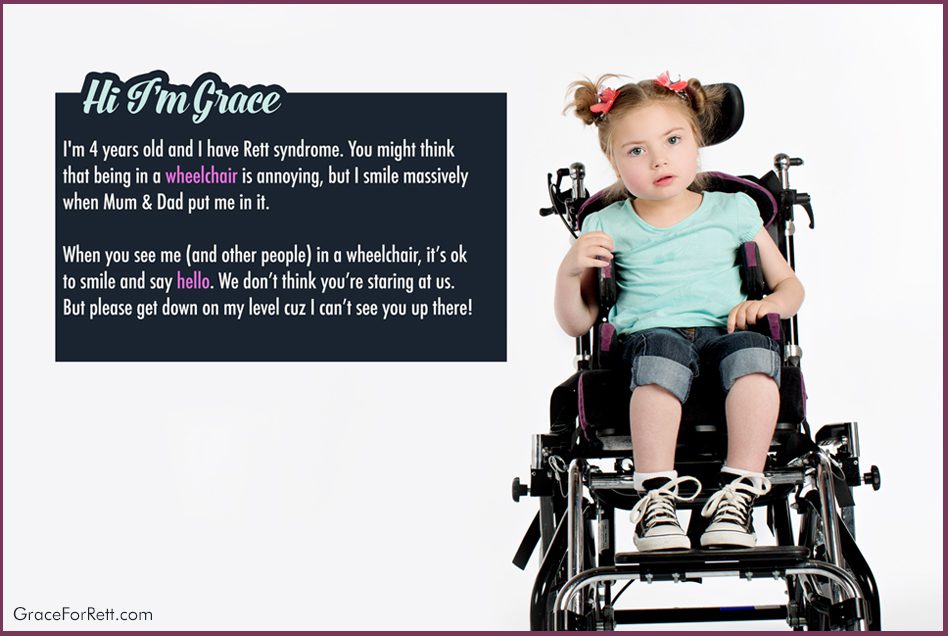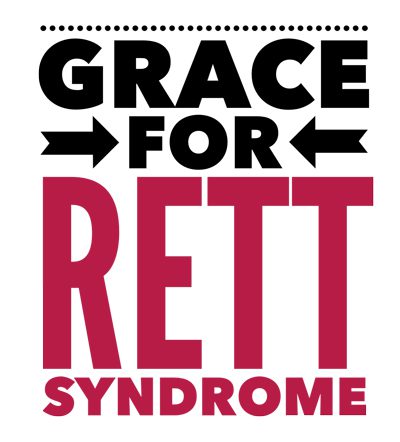 It’s estimated that 50% of girls and women with Rett syndrome can walk. This leaves the other 50% using wheelchairs and other mobility aids like hoists, standing frames and sitting solutions.
It’s estimated that 50% of girls and women with Rett syndrome can walk. This leaves the other 50% using wheelchairs and other mobility aids like hoists, standing frames and sitting solutions.
People generally take walking for granted. There are so many functions in our bodies that are aided by our ability to be upright.
- Scoliosis – It’s not clear whether being non-mobile adds to the risk of scoliosis in a girl with Rett syndrome. It’s been reported that even placing a child in hard vests or other non-surgical interventions doesn’t prevent the worsening of scoliosis. Be that as it is, it’s still advisable to always help a non-mobile person maintain proper posture. For a non-mobile person, this means a programme of posture maintenance which includes wheelchairs, standing solutions, sleep systems, etc.
- Bodily functions – Many of our bodily functions rely on us being upright. Urinary health, bowel health, kidney functions, etc. are aided when we spend portions of our day upright and walking around.
- General Health – Non-mobile people experience illnesses differently from those who can walk. Ear infections, chest infections…they all hit a person harder and linger longer when the body isn’t functioning as it should. For instance, a non-mobile child may experience “glue ear” for longer than a child who can walk.
- Bones – I talked about osteoporosis a while back and one of the listed ways to prevent brittle bones was weight bearing exercise. A person who doesn’t weight bear is at a higher risk for brittle bones.
- Lung Function – Your lungs can’t reach full capacity when you’re scrunched down in a sitting position.
- Joints – Hip dysplasia (displaced hips) are a threat for kids with Rett, moreso for those who aren’t mobile.
While all of this can seem pretty grim, we’re so very lucky to be living in the times we’re in because there are many interventions available for non-mobile people to strengthen their bodies:
- Wheelchairs – Obviously, the first piece of equipment a non mobile child will require is a wheelchair. In the UK, the referral for this comes through your occupational therapist and it can tak a very long time for your first assessment to happen. Bear this in mind and be aggressive about getting that referral through as early as possible. In the USA, the process looks much different. We’re in the UK, so we asked our American Facebook audience to tell us how it works. Melanie K. came back to us with this fantastic answer: “Typically, a doctor writes a prescription for a wheelchair. Then a rehab specialist (OT or PT) and a rehab tech supplier do the wheelchair evaluation. Then a letter of justification is submitted to a third party payer by the evaluation team. These payers are either private health insurance companies or Medicaid (joint state and federal funded program).” Grace currently uses a chair which is a RideDesigns custom seat on a Zippie base. We’ve also enjoyed a couple different Ottobock chairs in the past!
- Standing frames – It’s highly recommended that girls with Rett have a programme of daily standing in place. More on this in a couple days. It’s a weight bearing exercise that strengthens bones, aids in the prevention of osteoporosis and allows for full lung expansion, which is especially important since girls/women with Rett can suffer with recurring chest infections. Standing also aids in hip formation and can aid in the prevention of hip dysplasia. Grace currently uses a Jenx prone stander
- Standing wheelchairs – Standing wheelchairs are a rather new invention but they’ve certainly caught our eye as a fantastic way to get your non-mobile kid up and moving around in the world in the way anyone else would.
- Walking – If your girl can walk, get her UP! Some children lose the ability to walk during regression or even after, but make the most of it while you can and know that some kids get their walking back after regression. If your child has suddenly stopped walking, explore the possible reasons. Fear (a recent fall?) or pain (hips?) could be to blame. Encourage her and get her up as much as possible.
- Physical therapy – When a person is unable to bear weight on their own joints, physical therapy can help you do it for them. In addition to helping form the joints, bearing weight on your joints sends signals to your brain about your body. Non-mobile people need help doing this through various therapeutic interventions which can be easily woven into every day life.
There are so many additional needs for girls & women with Rett that things like wheelchairs and the abovementioned equipment and interventions just become part of your everyday life. If your child is newly diagnosed, please know that this will get easier. I never thought I’d never get used to the added struggle of managing a life full of equipment, but you know…it really did get easier. Hang in there.





